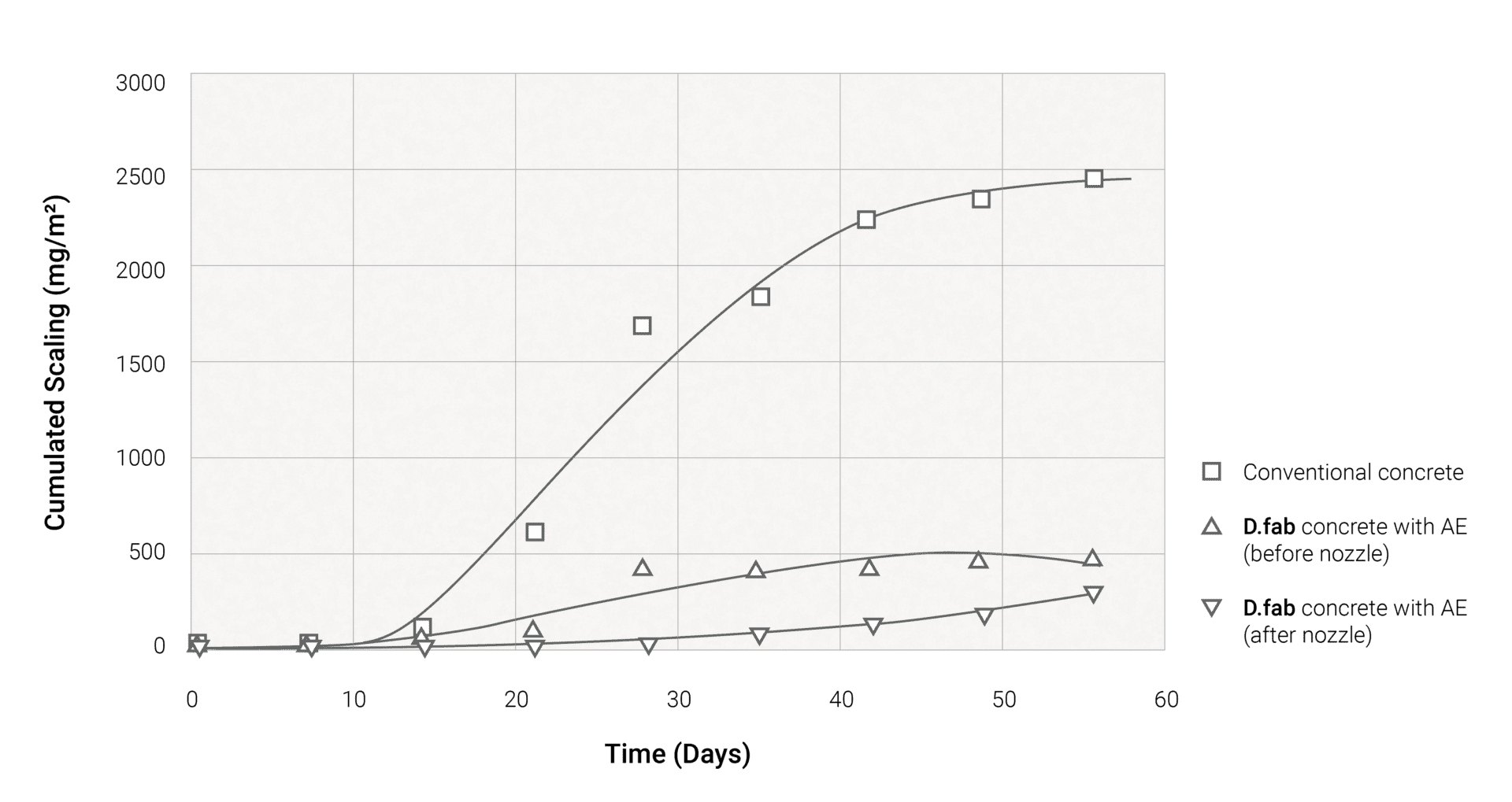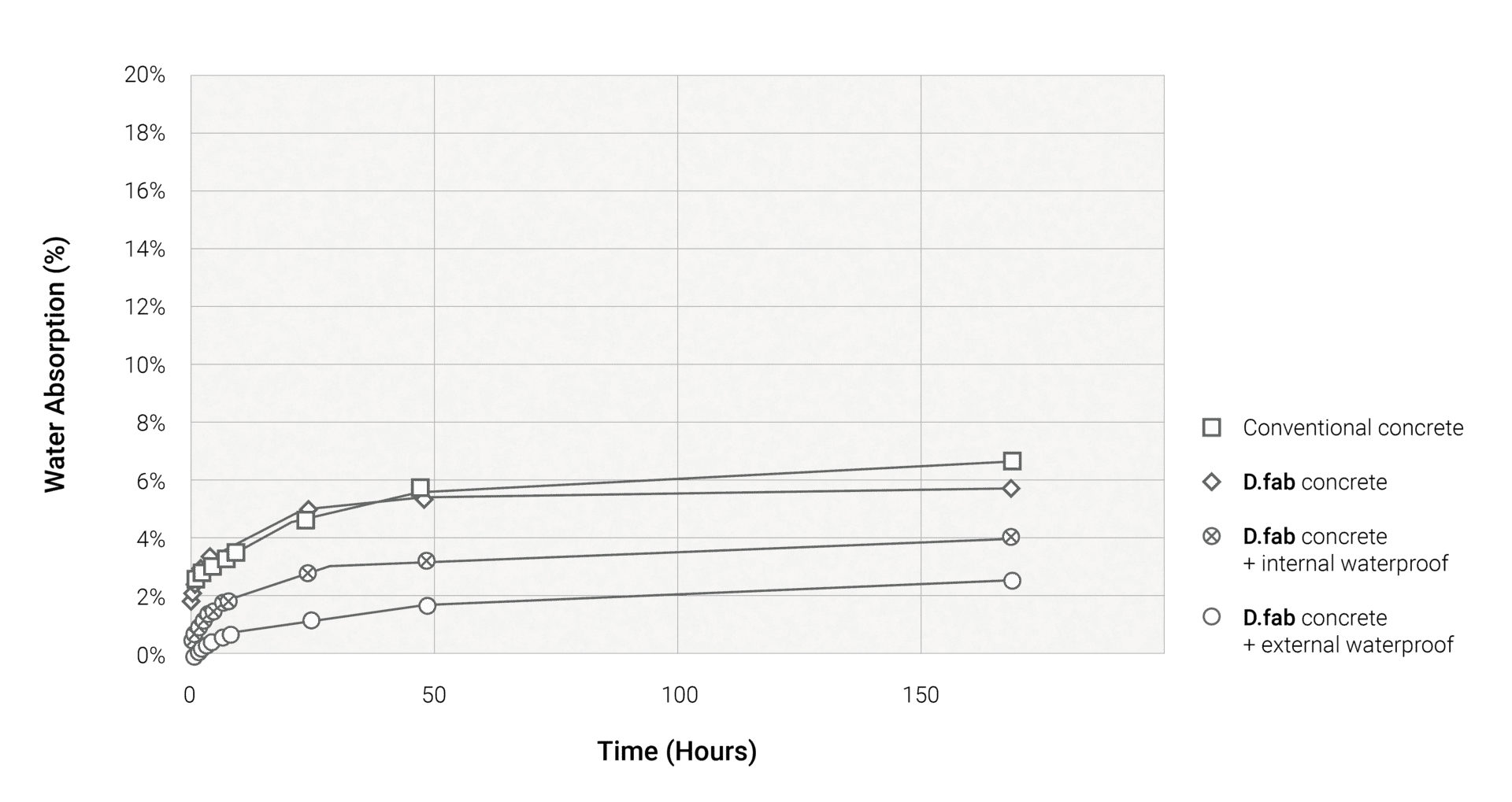D.fab
World's first 3D printable concrete solution by Cemex & Cobod
The use of 3D printing in construction projects is gaining ground on a global scale given the construction method's potential to deliver significant cost savings due to efficient use of materials and less need for labor. The technology combats an increasingly scarce availability of skilled labor as well as offers new advantages in terms of design freedom.
Advancing construction’s 3D Printing Technology to its new era
CEMEX & COBOD’s close collaboration, experience, and expertise have been key to developing a novel material and machine solution and materials processing system for 3D printing with universal application, economically viable, and industrialized.
The breakthrough in the proposed solution is the proprietary admixture system belonging to the CEMEX D.fab admixtures family designed for digital (D) fabrication (fab) in concrete.
The D.fab system coupled with key 3D Printing machine features renders the concrete technology very robust independent of the cement, sand, supplementary cementitious materials (e.g. slag or fly ash), or gravel used, the concrete will fulfill the fresh, hardened, and durability properties required for a 3D printing job.
Despite the advantages of 3D construction printing using cement-based materials, there are still challenges to overcome:
- Rely on pre-packed/dry mortar mixes
- High cement content
- Expensive premixing of heated and dried materials
- Specific tailor-made formulations that are 3D printer-specific
- High logistical costs to get the dry mix to the printing site
How CEMEX’s D.fab Admixtures system for 3D printing works
Industrialization of the 3D Printing process is achieved by either connecting the printing unit to a batching plant or by delivering the concrete to the job site via trucks from a batching plant relatively close by.

The admixtures systems are designed to impart the concrete mix with an immediate transformation that allows the mix to hold its volume and provide the necessary strength to allow immediate stacking of a successive print layer, thereby speeding up the printing process and saving material.

Mechanical performance of D.fab concrete
The mechanical properties of the D.fab concrete are comparable to conventional concrete. It can also be accelerated to increase strength development at the early stages, especially in the first 4 hours and up to 24 hours.

Durability of D.fab concrete
Durability is one of the main characteristics of concrete. As seen below, the D.fab admixture system enhances shrinkage performance of the concrete compared to conventional concrete, making the 3D printed concrete more durable.

To further demonstrate the durability of the the D.fab concrete, freeze-thaw testing was carried out. The tests showed a very low accumulated scaling, which means that the material degradation is at a minimum in terms of freeze-thaw damage.

An important parameter of concrete durability is the concrete's ability to resist water. Therefore, water absorption tests were carried out. As evident below, the use of the waterproofing admixture internally or externally improves water tightness and durability of the 3D printed D.fab concrete.

The CO2 footprint of D.fab concrete
The D.fab solution offers a more environmentally friendly solution with a CO2 footprint 1.5 times lower than mortars typically used in 3D printing. Therefore, the conclusion is very clear. The D.fab concrete solution is the way towards offering a more sustainable and viable material solution.

Comparing D.fab concrete to dry-mix mortars
- D.fab is an adaptable materials solution. You can change the recipe for the climate and available raw materials. You can't change the recipe of a drymix.
- D.fab is developed for an outdoor structure, because it contains gravel it can resist drying-related cracking. Drymixes crack when it is placed outdoors, because it does not contain gravel.
- D.fab is developed for large volume structure (buildings), because it uses locally sourced raw materials. Dry mixes are for small elements because it is very expensive for large structures.